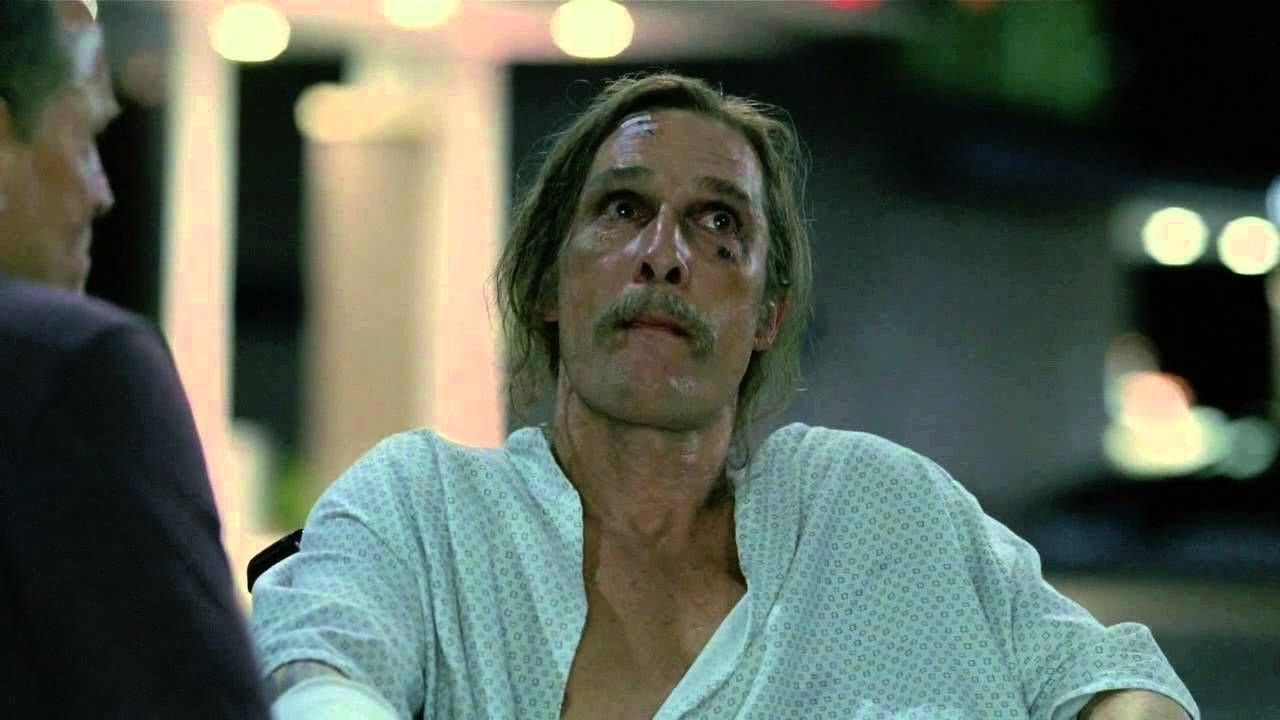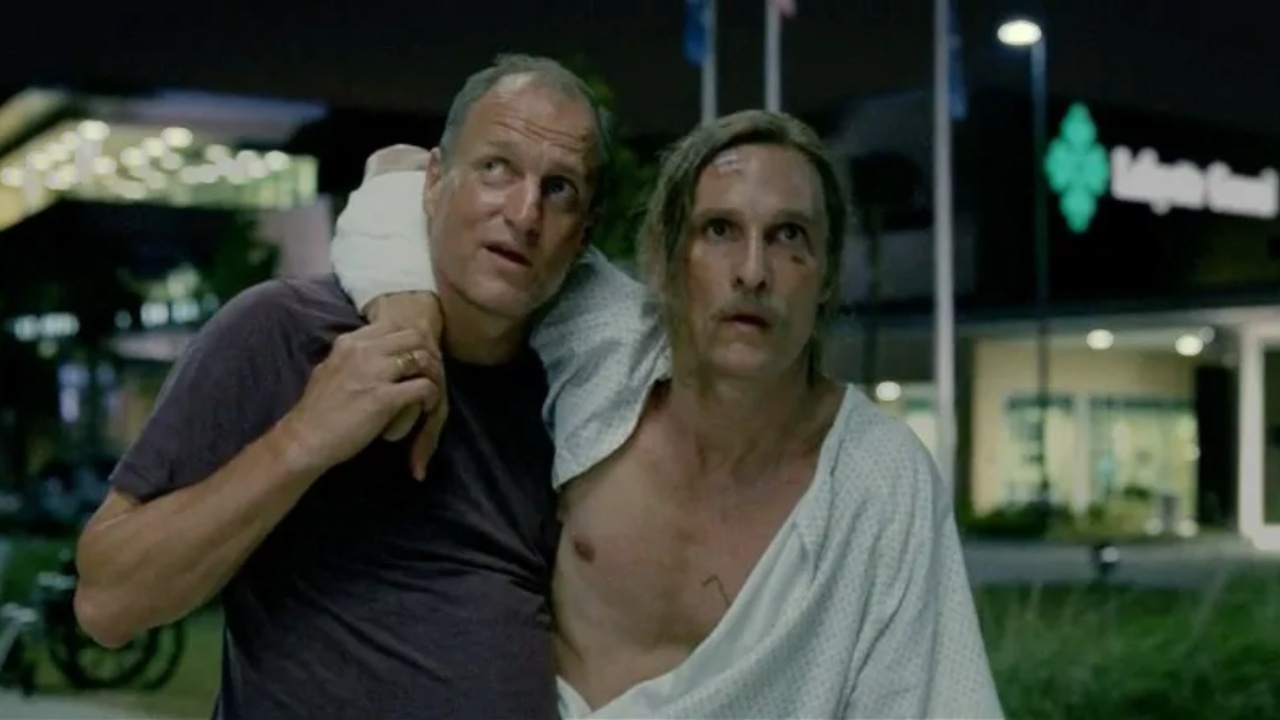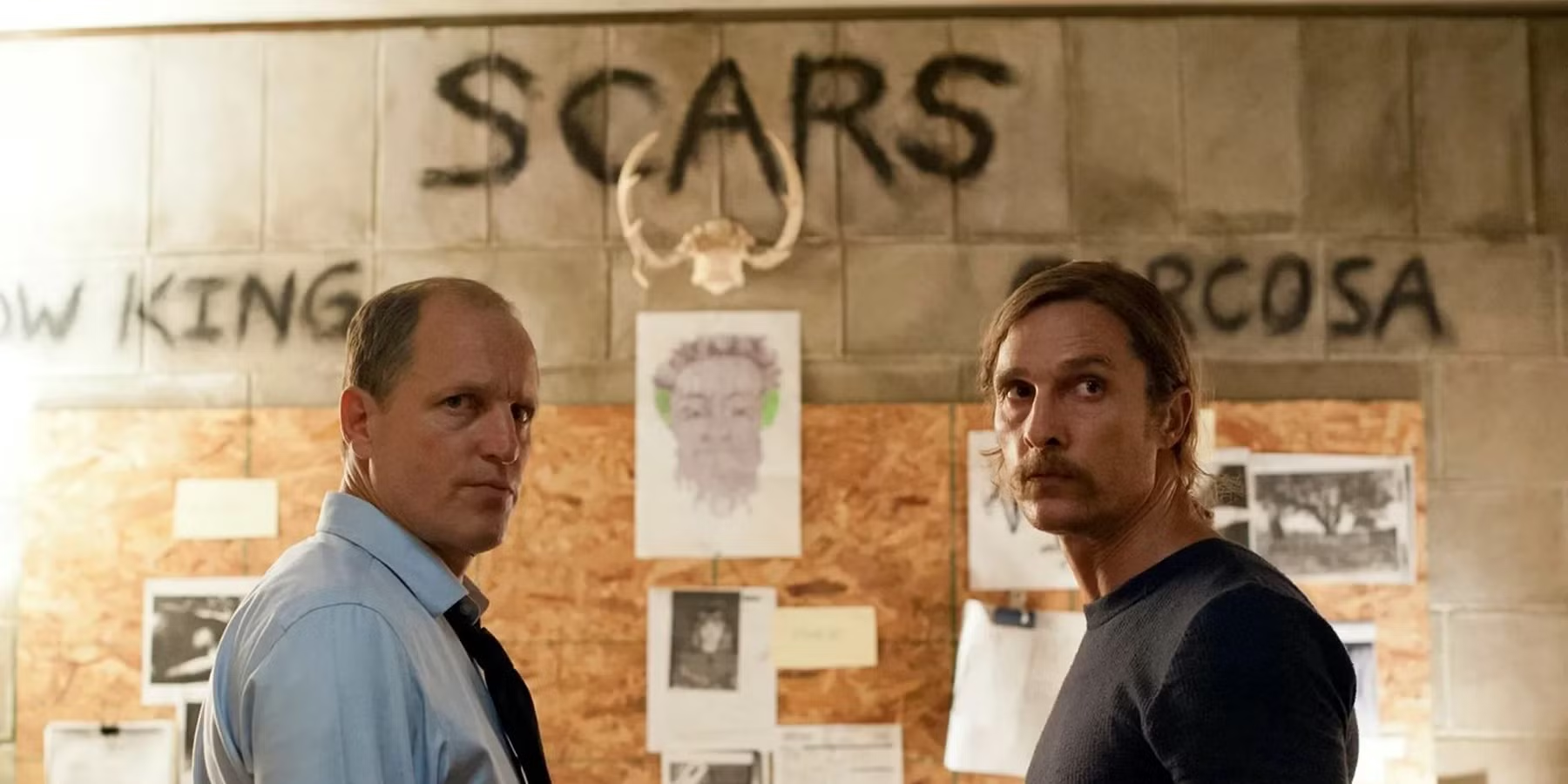True Detective Season 1 follows Louisiana homicide detectives Rust Cohle and Marty Hart as they investigate a series of ritualistic murders spanning nearly two decades. Set in 1995, 2002, and 2012, the series explores how time, trauma, and guilt shape both men’s lives.
Rust, a brooding, philosophical ex-narcotics officer, and Marty, a more traditional yet morally flawed detective, are first drawn together by the murder of Dora Lange. Seventeen years later, when similar killings are discovered, they are forced to revisit the case and confront their failures. Through its nonlinear structure and deeply existential dialogue, True Detective transforms a police procedural into a reflection on morality and the passage of time.
The finale reveals Errol Childress as the serial killer responsible for Dora Lange’s death and many related crimes. Introduced subtly throughout the series, Errol finally emerges as the scarred man described in the original investigation. He is the grandson of Sam Tuttle, patriarch of the powerful Tuttle family that secretly runs a religious cult in Louisiana.
Living in isolation with his half-sister, with whom he has an incestuous relationship, Errol carries on his family’s ritualistic worship of “The Yellow King.” His job as a groundskeeper for schools and churches gives him access to potential victims, often women and children. Errol’s violence, framed by religious fanaticism and inherited depravity, makes him a symbol of generational corruption that stretches from rural poverty to political power.
The Tuttle family cult lies at the core of True Detective’s mystery. Prominent members of the family, including Reverend Billy Lee Tuttle and state officials, use their influence to protect fellow cultists and conceal decades of sexual abuse and ritual murder. Their belief system centers on the mythical Yellow King and a ceremonial place called “Carcosa.”
Although inspired by Robert W. Chambers’ 1895 book The King in Yellow, the cult’s practices are entirely of their own creation, blending mysticism, Christianity, and hallucinatory ritual. Carcosa, a maze of twisted trees, bones, and altars on Errol’s property, becomes the physical manifestation of the cult’s moral decay. The show never confirms whether the Yellow King is a real supernatural presence or a delusion born from obsession and drug use, leaving its meaning open to interpretation.

Confronting Carcosa and the Human Abyss Within Rust Cohle and Marty Hart
Carcosa functions as both a physical setting and a symbolic center of evil. It is there that Rust and Marty finally confront Errol, forcing them to face the embodiment of human corruption. The series implies that the crimes of the Tuttle cult are not isolated incidents but reflections of a wider sickness within institutions such as the church, government, and family.
By presenting Carcosa as a decaying ruin filled with signs of past rituals, True Detective suggests that evil is not a fleeting condition but an enduring force. This idea mirrors Rust’s assertion that “time is a flat circle,” where events and sins repeat endlessly. In Carcosa, the past and present merge, and every act of violence feels connected to something timeless and deeply ingrained in human nature.
During the final confrontation, Rust experiences a vision of a swirling vortex that represents his lifelong struggle with meaning and mortality. The vision could be a hallucination caused by his past drug use, a metaphoric doorway to death, or a symbol of his internal void. Throughout the series, Rust maintains a nihilistic worldview, insisting that life has no higher purpose and that human existence is only a repetition of suffering.
Yet in this moment, as he nearly dies, he senses something beyond emptiness, perhaps the presence of his deceased daughter and father waiting for him. The experience bridges his skepticism with a fragile form of belief. It reveals that beneath his detachment lies deep emotional pain and a longing for connection. The vortex becomes a representation of his inner struggle and his brief confrontation with the unknown.
While Rust confronts philosophical despair, Marty endures a more personal collapse. His infidelity, hypocrisy, and emotional neglect destroy his marriage to Maggie and estrange him from his daughters. Marty sees himself as a moral man and a protector, yet his behavior exposes his weakness and lack of self-awareness.
By 2012, he was divorced, lonely, and uncertain of his place in the world. His partnership with Rust, once filled with conflict, becomes his only source of companionship. Marty’s story shows that corruption exists not only in cults or killers but also in everyday failures of honesty and empathy. His downfall reflects the broader moral decay that pervades the society around him, suggesting that personal sins are as destructive as public crimes.

Light Amid Darkness and the Enduring Meaning of True Detective Season One
After the confrontation with Errol, both detectives survive and awaken in the hospital. In the closing scene, Marty wheels Rust outside to gaze at the stars. Marty observes that “the dark has a lot more territory,” but Rust replies, “Once, there was only dark. If you ask me, the light’s winning.” This brief exchange captures Rust’s transformation.
Having spent most of his life consumed by pessimism, he now recognizes traces of goodness and redemption in the world. His acceptance of light amid darkness does not signal naïve optimism but an acknowledgment that hope and morality still exist despite suffering. Their victory is not the defeat of evil but the act of resisting it. Through this small moment, Rust finds a fragile peace that had eluded him throughout the investigation.
Series creator Nic Pizzolatto has explained that the ending was meant to convey cautious optimism without sentimentality. Rust’s final words were written early in the show’s development to balance his nihilism with a sense of renewal. Pizzolatto avoided supernatural explanations, choosing instead to ground the conclusion in human experience. The finale is less about solving a mystery and more about the detectives’ decision to face horror rather than turn away from it.
In interviews, Pizzolatto stated that Rust and Marty “did not avert their eyes,” which was central to their redemption. His comment that “we are nothing but the stories we live and die by” emphasizes that people define themselves through their choices and the meaning they assign to their lives. The ending therefore, becomes an affirmation of endurance rather than faith.
True Detective Season 1 received overwhelming praise for its writing, performances, and philosophical depth, achieving a 92 percent approval rating on Rotten Tomatoes. Subsequent seasons struggled to reach the same level of acclaim. Season 2 was criticized for its overly complex plot, while Season 3 regained some critical favor due to Mahershala Ali’s acclaimed performance.
Season 4, titled Night Country, revisited certain symbols and family connections from Season 1, including the spiral motif and Rust’s father’s ghost, although Pizzolatto was not involved in its production. Critics admired its ambition but noted that it borrowed too heavily from earlier material. Despite these mixed results, the original season remains the most influential, known for combining a gripping crime narrative with profound meditations on morality and existence.
The first season of True Detective continues to resonate because it transcends the conventions of its genre. Beneath the structure of a murder investigation lies a study of human weakness, guilt, and the possibility of redemption. The finale avoids sensational twists and instead offers quiet introspection as two broken men confront the weight of their choices.
Rust’s belief that “the light’s winning” does not erase the darkness but recognizes that hope survives even in despair. Viewers and critics continue to debate whether the ending represents victory or resignation, yet this ambiguity is what makes the story timeless. Ultimately, True Detective Season 1 is not about solving a crime but about enduring the knowledge of evil and finding, even for a moment, a reason to keep searching for light.



